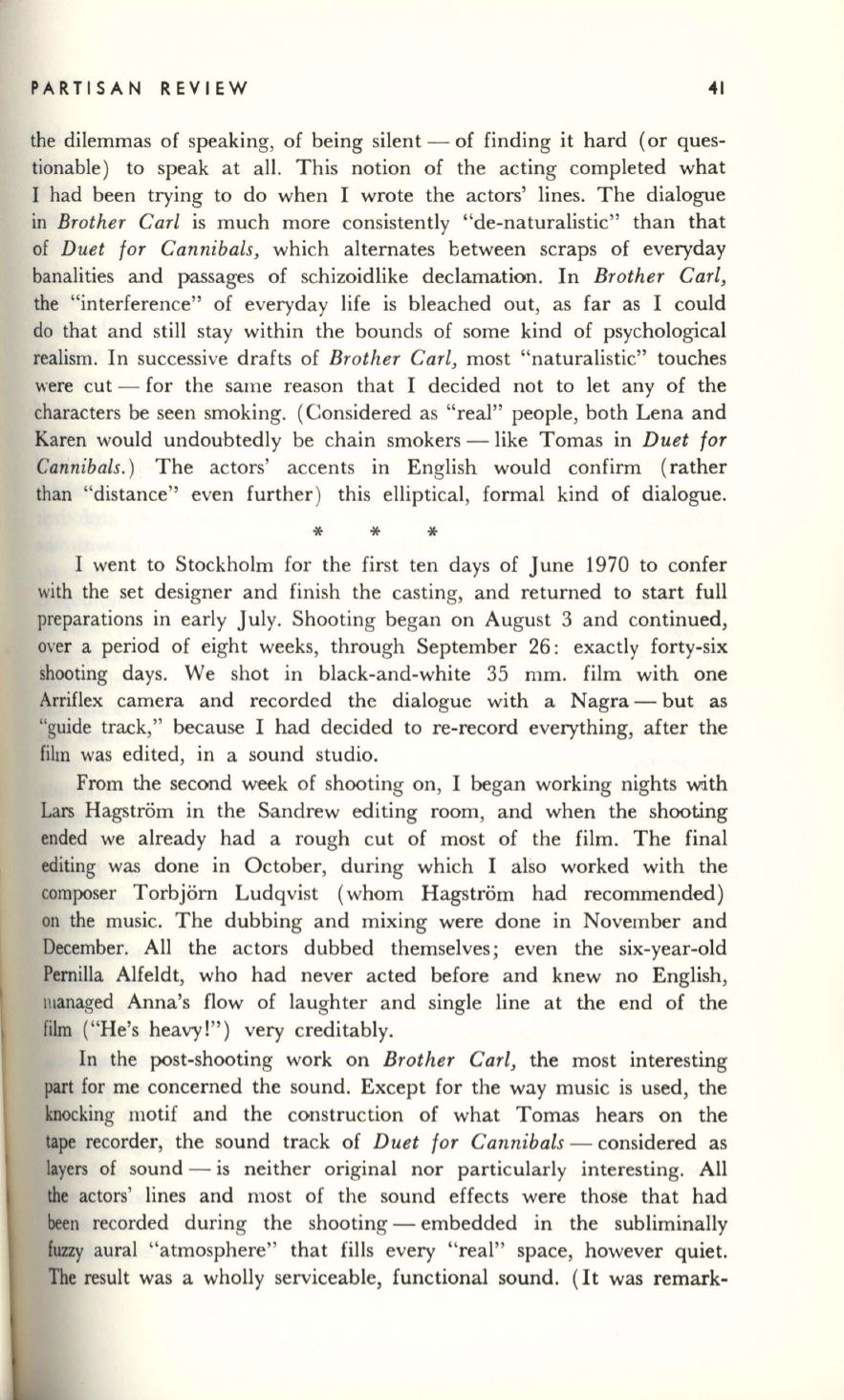
PARTISAN REVIEW
41
the dilemmas of speaking, of being silent - of finding it hard (or ques–
tionable) to speak at all. This notion of the acting completed what
I had been trying to do when I wrote the actors' lines. The dialogue
in
Brother Carl
is much more consistently "de-naturalistic" than that
of
Duet for Cannibals,
which alternates between scraps of everyday
banalities and passages of schizoidlike declamation. In
Brother Carl,
the "interference" of everyday life is bleached out, as far as I could
do that and still stay within the bounds of some kind of psychological
realism. In successive drafts of
Brother Carl,
most "naturalistic" touches
were cut - for the same reason that I decided not to let any of the
characters be seen smoking. (Considered as "real" people, both Lena and
Karen would undoubtedly be chain smokers - like Tomas in
Duet for
Cannibals. )
The actors' accents in English would confirm (rather
than "distance" even further ) this elliptical, formal kind of dialogue.
*
* *
I went to Stockholm for the first ten days of June 1970 to confer
with the set designer and finish the casting, and returned to start full
preparations in early July. Shooting began on August 3 and continued,
over a period of eight weeks, through September 26: exactly forty-six
shooting days. We shot in black-and-white 35 mm. film with one
Arriflex camera and recorded the dialogue with a Nagra - but as
"guide track," because I had decided to re-record everything, after the
film was edited, in a sound studio.
From the second week of shooting on, I began working nights with
Lars
Hagstrom in the S·andrew editing room, and when the shooting
ended we already had a rough cut of most of the film. The final
editing was done in October, during which I also worked with the
composer Torbjorn Ludqvist (whom Hagstrom had recommended)
on the music. The dubbing and mixing were done in November and
December. All the actors dubbed themselves; even the six-year-old
Pernilla Alfeldt, who had never acted before and knew no English,
lIlanaged Anna's flow of laughter and single line at the end of the
film ("He's heavy!") very creditably.
In the post-shooting work on
Brother Carl,
the most interesting
part for me concerned the sound. Except for the way music is used, the
knocking motif and the construction of what Tomas hears on the
tape recorder, the sound track of
Duet for Cannibals
-
considered as
layers of sound - is neither original nor particularly interesting. All
the actors' lines and most of the sound effects were those that had
been recorded during the shooting - embedded in the subliminally
fuzzy aural "atmosphere" that fills every "real" space, however quiet.
The result was a wholly serviceable, functional sound. (It was remark-


